20 Companion Plants for Camellias (with Pictures)
-
Pete Ortiz
- Last updated:
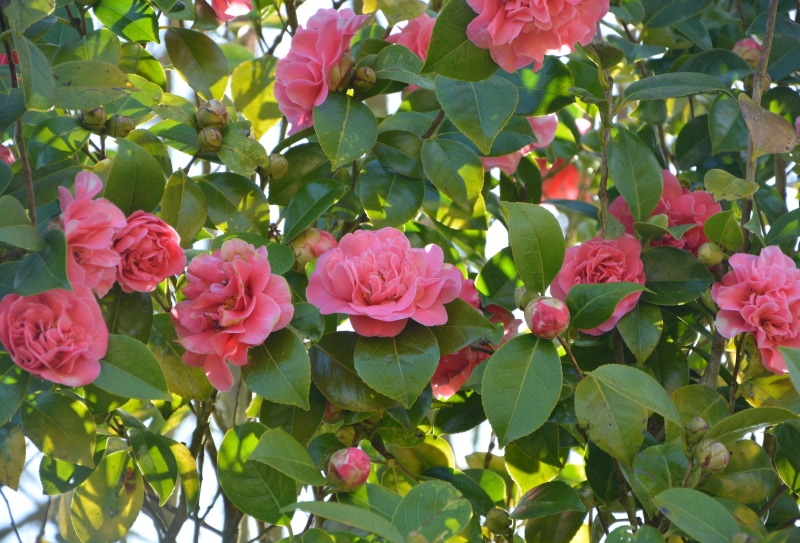
Camelia’s, also known as the queens of the winter, are beautiful evergreen shrubs with the most spectacular blooms. They are a fantastic addition to any garden bed, either on their own or with some neighboring plants that will complement their beauty. You can also pair them with other companion plants to improve the soil conditions, protect them from pests, and increase water retention.
Camellias are available in different varieties and thrive in moist conditions with acidic, well-draining soil, dappled sun, and shelter from the wind. A good companion plant should be able to thrive in the same growing conditions as Camelias, so let’s have a look at which plants will make great neighbors.

The Top 20 Companion Plants for Camelias
Flowering Plants
Most flowering plants do well with camellias, and the burst of various colors can bring a charming appearance to your flower beds. All these plants are acid-loving and thrive in the same soil environment. There is an abundance of species that you can explore your gardening creativity with.
1. Azaleas
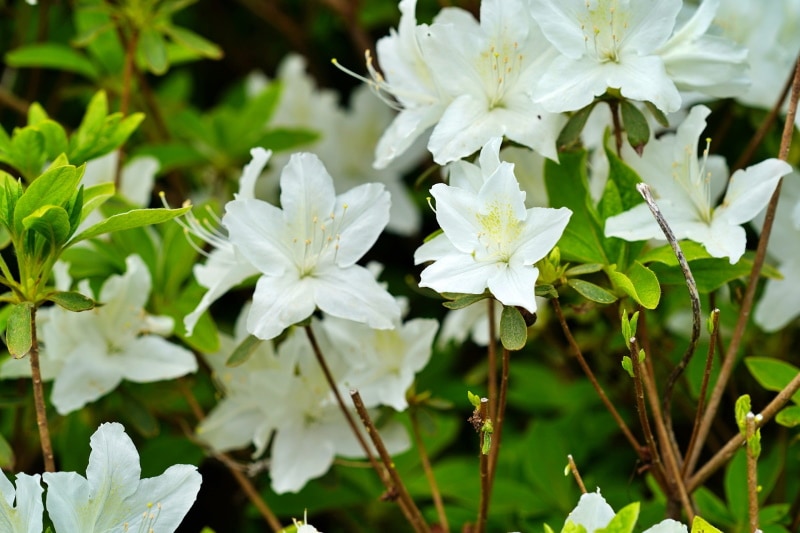
| USDA Hardiness Zone | 6–9 |
| Position | Partial shade |
| Soil | pH 5–5.6 |
Azaleas can be grown in almost any garden and are ideal companion plants as they also thrive in the same acidic environment that Camelias enjoy. They are one of the most popular plants because of their beautiful display of blooms in spring, and they are relatively easy to grow.
Azaleas should be planted in the spring, preferably in cool and loosely shaded areas. If the shade is too heavy where they are planted, it causes them to weaken and minimizes their blooming.
2. Gardenias
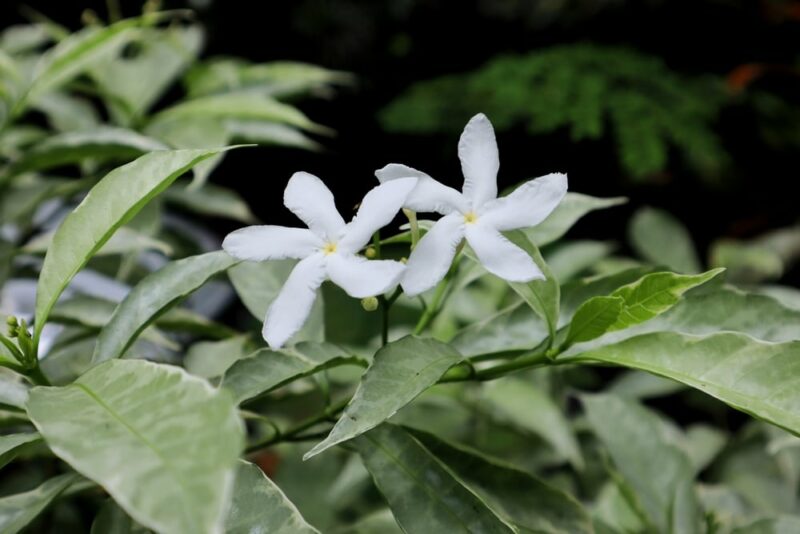
| USDA Hardiness Zone | 8–11 |
| Position | Partial shade |
| Soil | pH 5.0–6.0 |
Gardenias are another acid-loving plant that will pair well with Camellias. They beautify your garden with their ornamental, creamy white flowers and leave an intoxicating fragrance lingering in the air. They can be a tad fussy with their needs and may require a bit more maintenance, but their gorgeous blooms are worth it.
They enjoy the partial shade and regular watering and should be pruned when blooming has stopped.
3. Rhododendrons
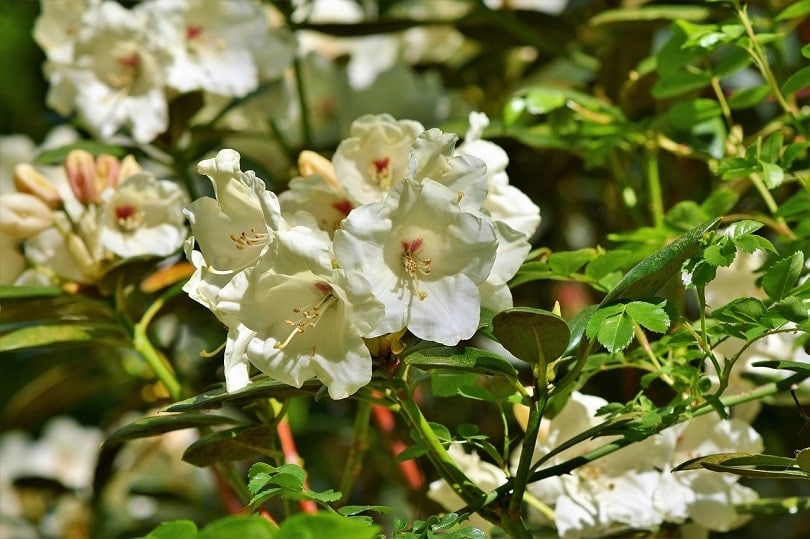
| USDA Hardiness Zone | 4–8 |
| Position | Partial shade, protected by wind |
| Soil | pH 4.5–6.0 |
Rhododendrons will thrive and get along with Camellias because they require the same soil environments. Not only that, but their flowers are also one of the most beautiful, complimenting the beauty of Camellias and contributing to a gorgeous landscape in your garden. If they are planted with proper care, they are fairly low maintenance.
They will thrive in dappled shade and like to be protected from the wind. Rhododendrons will be easier to care for if planted in moist, well-draining, loamy fertile soil with the proper pH.
Flower Bulbs
4. Crocus
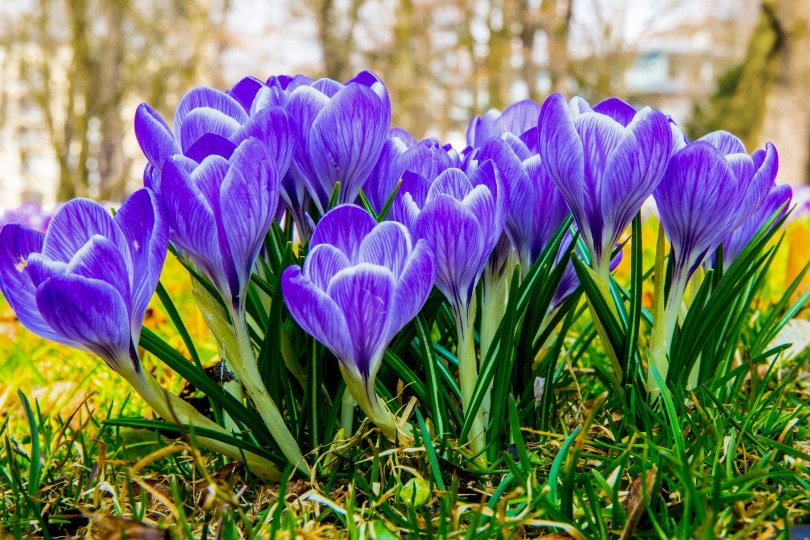
| USDA Hardiness Zone | 3–8 |
| Position | Full to partial sun |
| Soil | pH 6.0–7.0 |
The spectacular blooms of Crocuses will provide eye-catching color to your garden. They offer a variety of colors, such as red, orange, yellow, pink, purple, and blue, and they add a perfume that fills the air, attracting pollinators.
With minimum care, they will spread and come back year after year. They prefer well-draining soil and full sun but will also do well in partial sun.
5. Cyclamen
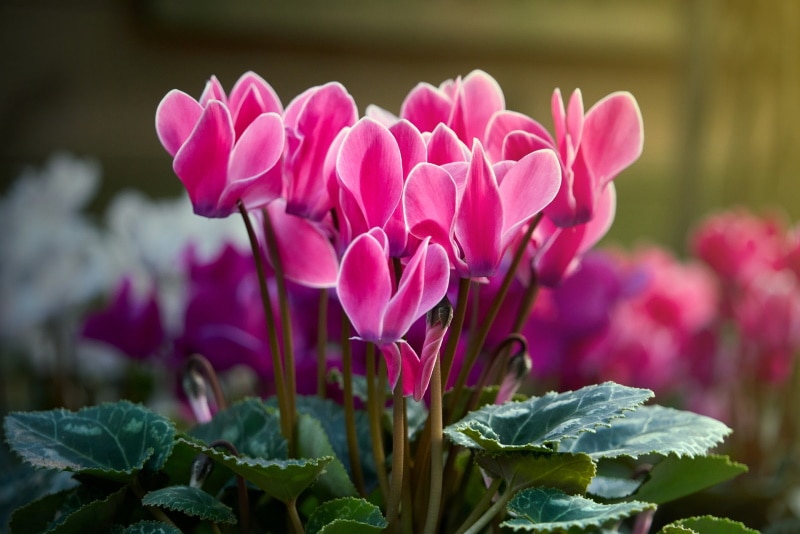
| USDA Hardiness Zone | 5 |
| Position | Full or partial shade |
| Soil | pH 5.5–6.0 |
Cyclamens are grown for their elegant and unique flowers. They thrive at the bases of deciduous trees and large shrubs, including Camelias. Hardy cyclamens are simple to grow as long as heavy soils prone to flooding are avoided. In general, they prefer poor, well-drained soil in full or partial shade.
They can also thrive and be admired in containers or as indoor plants.
6. Tulips
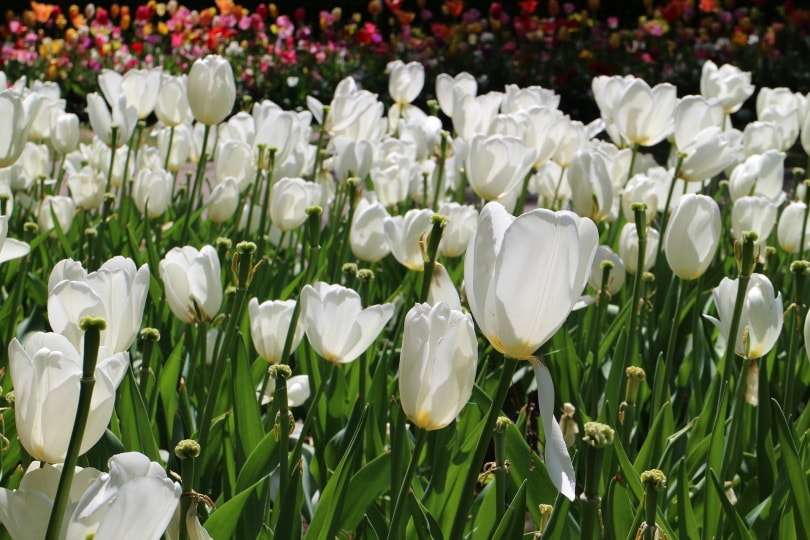
| USDA Hardiness Zone | 3–8 |
| Position | Sun |
| Soil | pH 6.0–6.5 |
Tulips are a favorite, and it’s not hard to understand why. They are beautiful and fascinating. Although they are good companions for Camellias, they may steal the attention! Tulip flowers are typically cup-shaped, with three petals and three sepals. They can bloom from early to late spring by planting varieties with different bloom times.
Tulips prefer full or afternoon sun. The soil must be well-draining and neutral to slightly acidic. Tulips all dislike wet conditions, but they are quite tolerant of the cold.
7. Lily of the Valley

| USDA Hardiness Zone | 3–9 |
| Position | Partial shade |
| Soil | pH 5.0–7.0 |
The Lily of the Valley is an attractive and fragrant flower that blooms in spring and the early summer. They have a charming bloom, with their flowers replicating tiny bells dropping off the stem.
Growing Lily Of The Valley is simple if you know how and when to plant it; this low-maintenance plant does not require much to thrive. It prefers partial shade and moist soil, but depending on the moisture it receives, the Lily of the Valley can be grown in full sun or shade.
Deciduous Trees
Camellias thrive in the shade of deciduous trees. When the trees shed their leaves, the Camellias are exposed to the winter sun, resulting in bigger, beautiful blooms. The leaves also offer free and easy mulch for your soil. Camelias also don’t need to compete for nutrients or water because the roots of these trees are non-invasive.
8. Japanese Maple Tree
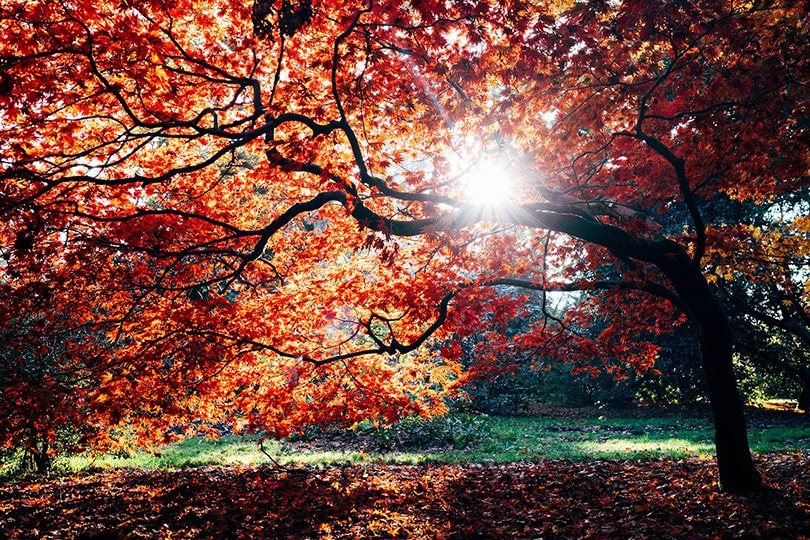
| USDA Hardiness Zone | 5–8 |
| Position | Full sun, partial shade |
| Soil | pH 6.2–6.5 |
Most Japanese Maples are a shade of red, complementing Camelias beautifully and making great lawn trees. Smaller varieties are excellent for large pots or bordering driveways.
Fall is a fantastic time to plant because it allows your Japanese Maple’s roots to establish themselves while the rest of the tree is dormant. They thrive in full sun with partial shade and most soil types as long as they are well-drained. They will need to be protected from strong winds and frost.
9. Crabapple

| USDA Hardiness Zone | 4–8 |
| Position | Full sun |
| Soil | pH 5.0–6.5 |
The Crabapple is an excellent choice for a compact, versatile tree that provides attractive blooms in summer and fall and an abundance of fruit that can be found on the branches well into winter. They can come in a variety of sizes, so they can suit any size garden.
Plant a Crabapple in spring when the temperatures are cool and the soil is moist. A crabapple will need a minimum of 6 hours of sun daily and will thrive in most soil conditions as long as it drains well.
10. Cherry Tree
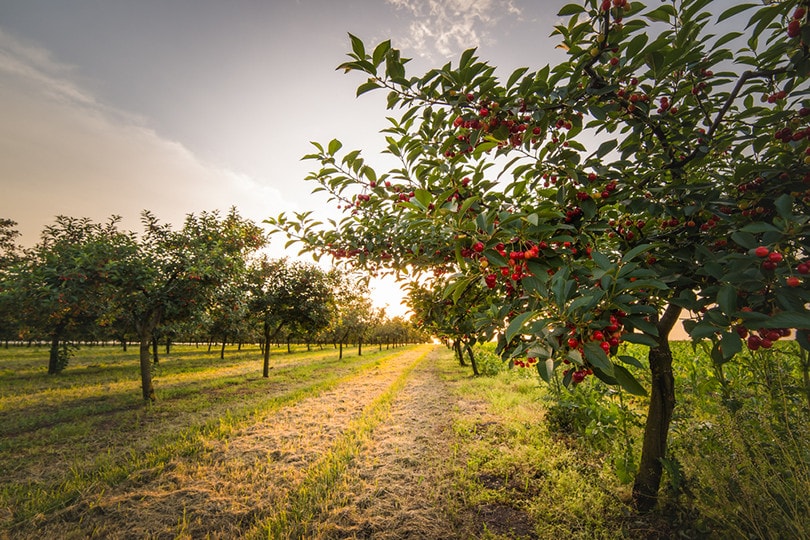
| USDA Hardiness Zone | 5–7 |
| Position | Full sun |
| Soil | pH 6.0–7.0 |
The gorgeous display of ornamental flowers on a cherry tree will be a perfect companion to beautiful Camellia blooms. They also produce small cherries that are a treat for birdlife, and their changing foliage throughout the seasons is always an attractive addition to any garden.
Cherry trees require well-drained, fertile soil and about eight hours of sunlight per day, so they cannot be planted in the shade of other trees.
Perennials
11. Hellebores
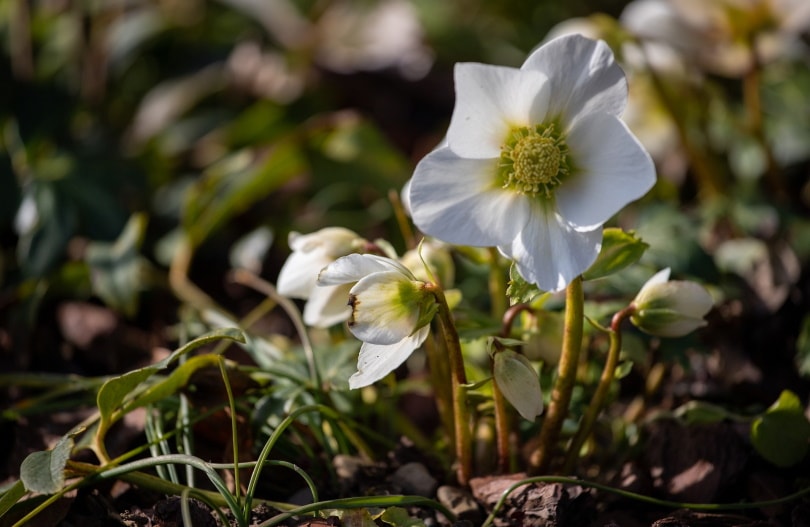
| USDA Hardiness Zone | 3–9 |
| Position | Partial shade |
| Soil | pH 5.5–6.5 |
Hellebores come in several varieties, including the Lenten Rose, Stinking Bear Foot, and Christmas Rose. They are often very fragrant and will be a part of your garden for a long time.
Hellebore care is simple and rewarding once established, and you can plant a variety of hellebores in the shade of your garden for a charming spring flower. They require only a few hours of dappled light and well-draining, organic soil to thrive.
Because all parts of the hellebore plant are poisonous, keep children and pets away from it.
12. Forget- Me-Nots- Myosotis
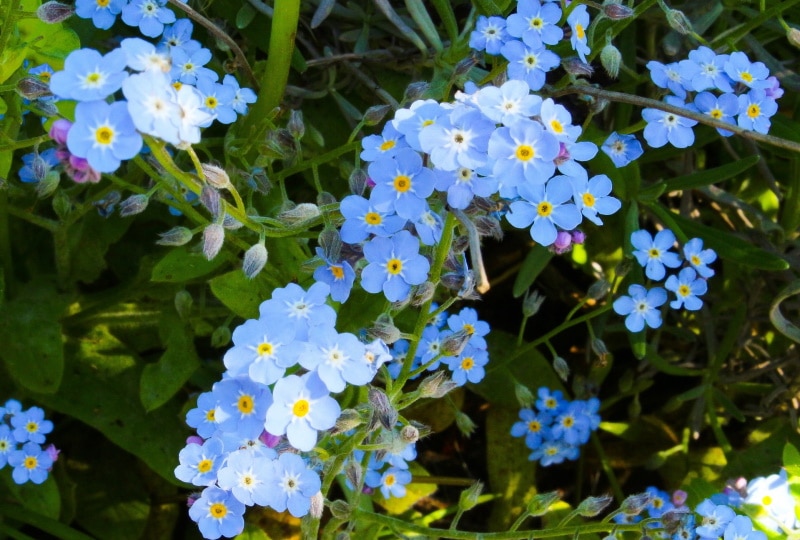
| USDA Hardiness Zone | 3–8 |
| Position | Full sun, partial shade |
| Soil | pH 6.0–8.0 |
These perennials look great around other spring flowers, such as the Camelia with their burst of delicate blue and white blooms with yellow eyes. They are easy to care for and resilient to most pests, and their nectar is a great attraction for bees and butterflies.
They thrive in full sun or partial shade and moist, well-draining soil. They are prominent seed producers and will naturally spread throughout your garden. Clusters are easy to lift, divide, and re-plant if they are growing in places you don’t want them to.
13. Lungwort-Pulmonaria
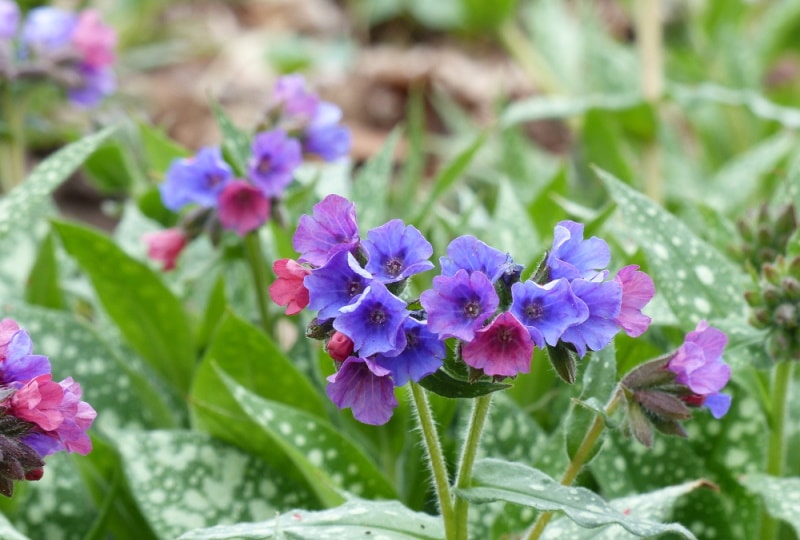
| USDA Hardiness Zone | 5–8 |
| Position | Partial shade |
| Soil | pH 7–7.5 |
Lungwort is a bold but delicate woodland perennial that contrasts well with other plants like Camelia to start the spring garden early. Their name arose from their spotty leaves that resemble a diseased lung and are thought to be a good treatment for respiratory ailments.
Pulmonaria are naturally short-lived plants; the only way to keep them for a long time is to divide the clumps every 3–5 years. They thrive in moist, well-drained soil and light shade with the morning sun. The pink and purple flowers gradually turn blue as they age.
14. Astilbes
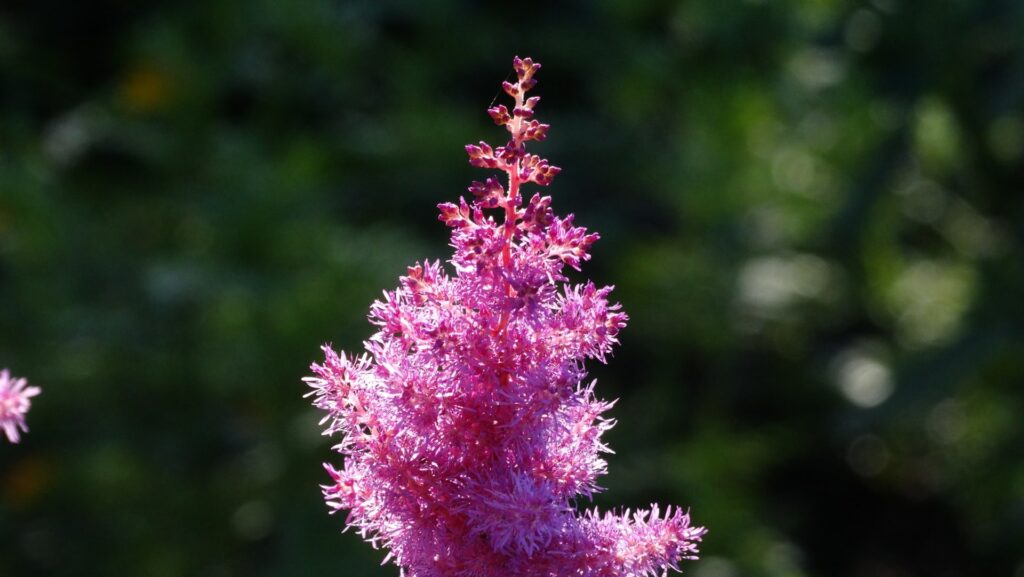
| USDA Hardiness Zone | 3–8 |
| Position | Partial shade |
| Soil | pH 6.0 |
Astilbe flowers are tall and elegant, with fluffy pink blooms that add character to your garden. These lovely flowers pair well with other shade-loving plants like Camellias. There are many species and hybrids available that will range in color.
Astilbes thrive in the shade, but they do enjoy a bit of dappled morning sunlight for a few hours. They prefer rich, organic soil enriched with compost and good drainage. Caring for them is minimal, but they will need regular watering.
Shrubs
Camellias look beautiful on their own and can look even more spectacular alongside some shrubs. Furthermore, shrubs can be beneficial to the growth of the Camelias by providing them with adequate shade. Your shrubs should not overpower your flowering plants, so pruning is crucial. These shrubs are ideal for companion planting:
15. Hydrangea
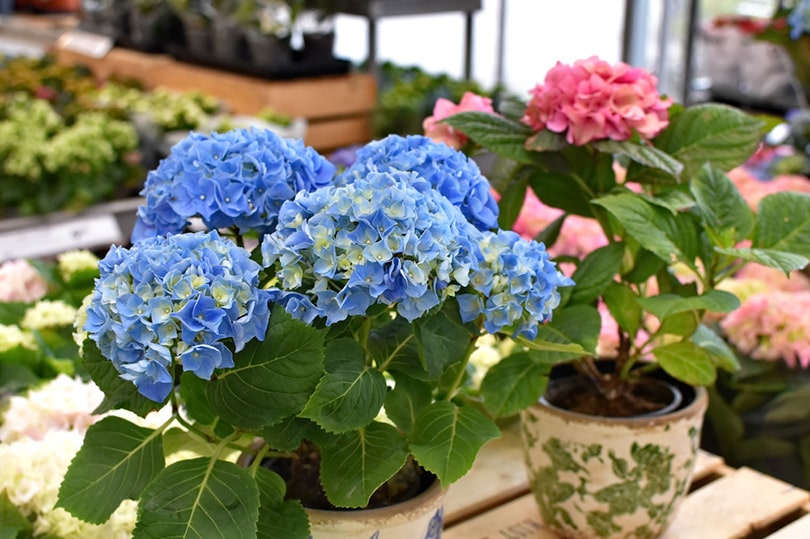
| USDA Hardiness Zone | 3–7 |
| Position | Partial shade |
| Soil | pH 6.0–6.2 |
Hydrangeas are beautiful shrubs that showcase clusters of charming blooms. The pastel but bright shades of blue, pink, lilac, rose, and white can adorn the same plant at the same time.
They are easy to plant and maintain and can thrive in most types of soil as long as they are well-draining and contain plenty of moisture. When planting Hydrangeas, you will want to give the root system some time to establish before the summer heat or winter chill hits.
16. Mahonia
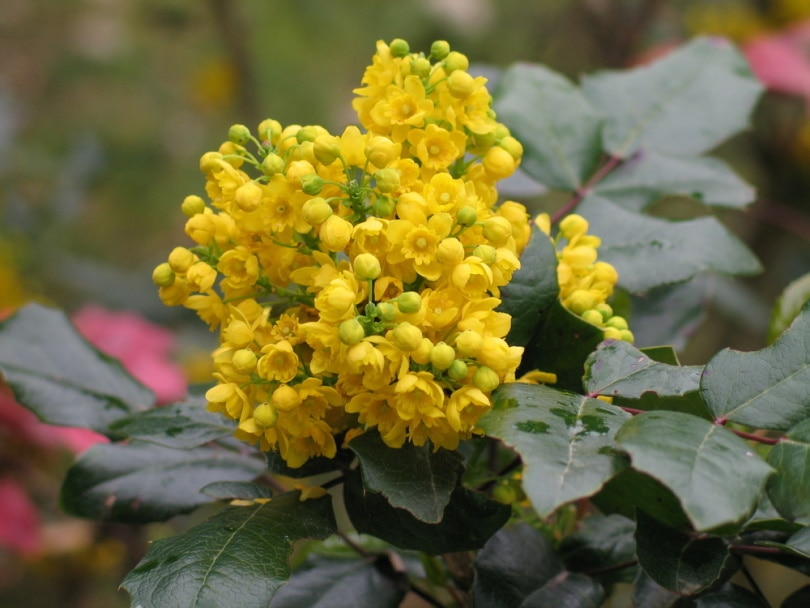
| USDA Hardiness Zone | 5–9 |
| Position | Partial shade |
| Soil | pH 5.0–8.0 |
Mahonia are shade-loving shrubs that make excellent hedges for privacy. Their fragrant and attractive yellow flowers invite bees and butterflies to your garden, while the berries attract some birdlife.
Mahonia are typically easy to grow, hardy, and low maintenance. They thrive in partial shade but can tolerate both full sun and heavy shade. They will grow well in most soil types as long as they are moist and well-draining.
17. Honeysuckle-Lonicera
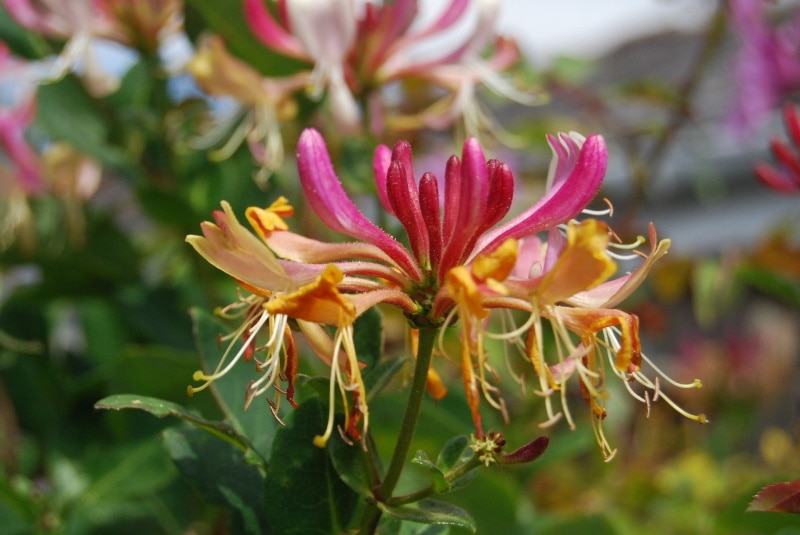
| USDA Hardiness Zone | 4–9 |
| Position | Full sun, partial shade |
| Soil | pH 5.5–8.0 |
Nectar-rich Honeysuckles will look beautiful trailing over fences or walls while filling the air with their sweet fragrance. They are also great evergreen shrubs that make great plants for privacy hedging. Branches that sport beautiful creamy white buds make great indoor arrangements, and the flowers will produce small red berries in late spring to early summer.
Honeysuckles grow best in full sun or partial shade in fertile, moist, free-draining soil. They are low maintenance and generally pest and disease free.
Groundcovers
If you want to make an eye-catching flower bed in your garden, groundcovers are a great companion to camellias. They will help your camellias thrive by improving soil and nutrient retention. However, keep a close eye on them to prevent them from overtaking your garden.
18. Groundcover Ferns
| USDA Hardiness Zone | 3–8 |
| Position | Indirect sunlight |
| Soil | pH 6.0–7.0 |
When it comes to ground cover planting, the variety and versatility of ferns provide numerous options. The types that form low, dense layers of fronds that run over the soil’s surface are perhaps the best examples of ferns for ground cover.
Examples of ground cover Ferns include Northern MaidenHair Ferns, Alpine Water Ferns, Oak Fern, Interrupted Ferns, and Hay-scented Ferns.
19. Bergenia
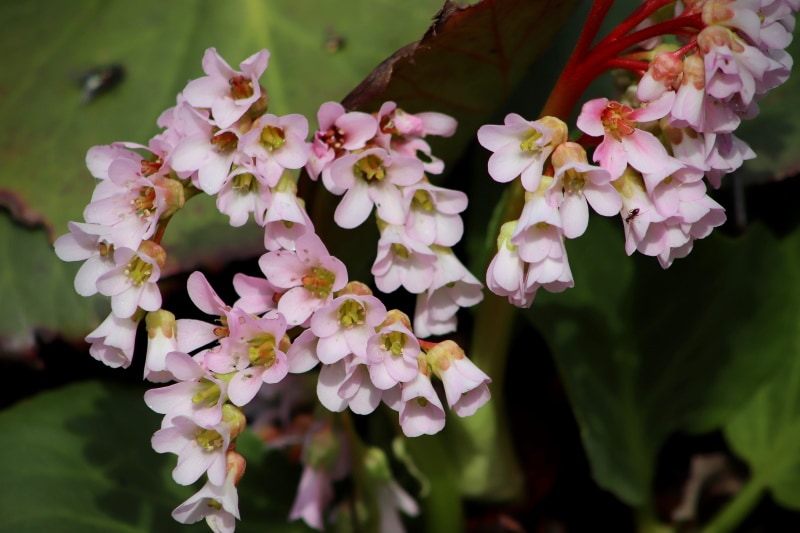
| USDA Hardiness Zone | 4–10 |
| Position | Partial shade |
| Soil | pH 5.5–5.8 |
Bergenia are a great choice to brighten up your garden alongside Camelias. They are also well known as Pigsqueak due to the sounds they make when you rub your fingers on their leaves.
Bergenia plant care is simple because these are low-maintenance plants. They prefer shade, dappled sunlight, and moist, well-drained soil, making them excellent groundcovers.
20. Bugleweed-Ajugas

| USDA Hardiness Zone | 5–9 |
| Position | Full sun to full shade |
| Soil | pH 6.5 |
Its name says a lot about this plant’s growth. Ajuga spreads gradually by sending out many wandering stolons, which are essentially horizontal roots that grow outward from the plant, making sharing very easy.
Ajuga is a low-maintenance plant that can tolerate conditions from full sun to full shade. It thrives in moist, well-draining soil but can also tolerate drought and dry soil. While Ajuga is a groundcover, it does not handle foot traffic, so you should avoid planting it in an area where it can be trampled.
The Worst Companion Plants for Camellias
Camellias are shallow-rooted plants that won’t do well next to trees or shrubs with deep, complex root systems. Plants that require more water than Camellias are not good neighbors either, as they can cause your Camelias to rot.
- Lavender: Unfortunately, lavender and camellias cannot be companions; their differences are various and uncompromising. Camellias, like lavender, are hardy in USDA zones 7 to 9 but cannot tolerate the sun and require much more water than lavender. One will not survive in the ideal environment of the other due to differences in sunlight and moisture.
- Pecan Tree: If you have Pecan Trees in your garden, planting Camellias between them is a bad idea. The leaves contain acid, which is released into the soil as the leaves decompose. This acid does not harm the pecan tree but discourages or kills other plants that grow nearby.
- Willow Trees: Willow trees require a lot of water, and that’s why they are usually found growing near large bodies of water. If you have a willow tree on the banks of your garden, Camelias won’t thrive near them. Camellias are susceptible to overwatering and root rot if kept too wet, so don’t plant them near your Willow tree. Clematis and Lilacs are flowers that prefer more alkaline soil, and Camellias won’t thrive in the same garden bed as these flowers.

Conclusion
While Camellias are beautiful on their own, that doesn’t mean they won’t thrive alongside some neighboring plants. Pairing them with the right plants can help your Camellias thrive while complimenting their beauty. Finding the best companions may involve trial and error, but the results will be worthwhile.
Featured Image Credit: Piqsels
Contents


